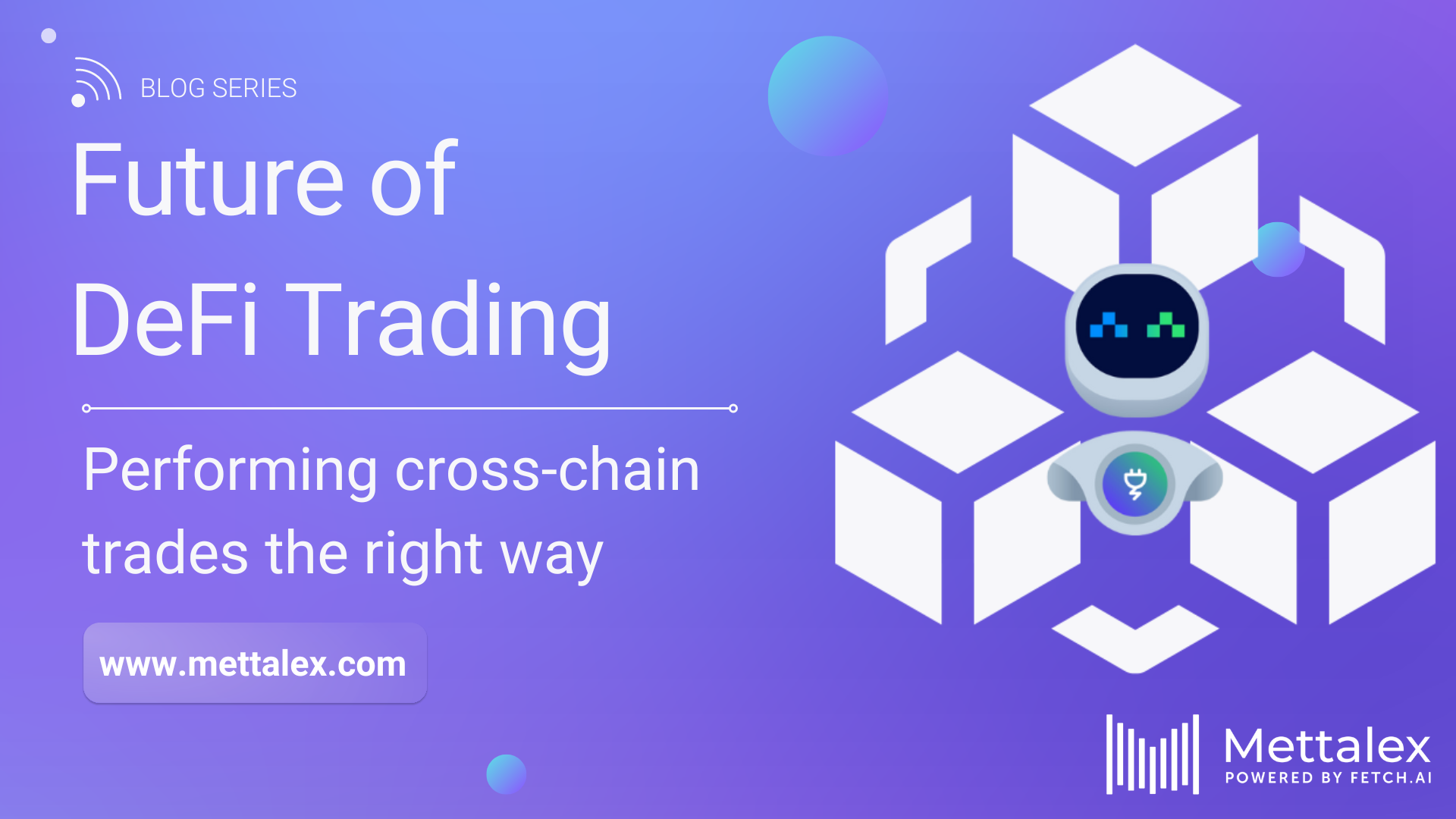
In the world of cryptocurrency, each blockchain operates like its own unique universe. For instance, Ethereum (ETH) and Bitcoin (BTC) are like two countries with their own rules, currencies, and communication methods. As you can imagine, sending assets from one to another isn't straightforward—there's no direct line of communication between these networks. In this Mettalex Future of DeFi Trading blog series, we will dive deep into how mettalex can securely and efficiently trade assets across different blockchains.
Current Cross-Chain Trading Mechanisms
Let's use our classic example of Alice and Bob as our guides to walk through this blog of cross-chain trading. Let us assume that Alice has Ethereum (ETH) and wants to trade Bitcoin (BTC) with Bob. They can trade themselves directly, But in this Decentralized world, it is difficult to understand the other party's requirements or find matching trades. Hence, they likely use a bridge, which locks up Alice's ETH and issues a token on the Bitcoin network representing her ETH, and then Bob trades his BTC for that token. However, the token Alice receives “ETH” on the Bitcoin blockchain would be a “Wrapped” one that carries the same significant value as the token/coin on the native chain. Sounds simple, right? Well, keep reading for real challenges.
The Bridge Dilemma
However, bridges are far from perfect. They are like international airports, which require a lot of security and maintenance to operate smoothly.
Quick Bites: Crypto Bridges hacks account for more than 70% of the total attacks in the blockchain industry, as per Chainalysis, a major blockchain firm. Check here: https://www.chainalysis.com/blog/cross-chain-bridge-hacks-2022/.
This comes at a huge security cost and high transaction costs, and it requires constant monitoring of smart contracts to mint and release assets in another blockchain, which is even more costlier when operating a bridge.
Mettalex: A New Era of Cross-Chain Trading
Enter Mettalex, making the need for bridges obsolete for cross-chain trading.
Imagine if Alice and Bob could communicate directly through a translator—this is what Mettalex does with AI agents.
The agents form a network of their own, in which they communicate with each other.
Let us take the example of Alice and Bob from earlier. Now, with the introduction of agents as a layer, when Alice locks ETH on Ethereum to trade with BTC, Alice’s agent now communicates with the agent network in search of an agent whose owner wants to trade BTC with ETH. Here, Alice’s agent stumbles upon Bob’s agent. This discovery is independent of blockchains from which assets belong. Once both alice and bob’s agent agree to trade (which they do autonomously) they execute the orders independently and transfer funds to opposing accounts. This means Bob now receives ETH on ethereum while Alice receives BTC on bitcoin network.
Why Mettalex is better
- No More Bridges: Directly trade assets between chains without exhausting bridging processes.
- Security and Efficiency: Eliminate the security risks and high costs associated with traditional bridges.
- Empowerment for All Traders: Whether you're like Alice, with just a bit of ETH, or Bob, looking to diversify his BTC, Mettalex provides a platform where anyone can participate in the DeFi space efficiently and safely.
Mettalex isn't just another DeFi platform. It is a groundbreaking revolution in the DeFi space, And our AI agents are facilitating seamless, direct trades across different blockchains. Don't just take it from ourside. Join it yourself by signing up for our private beta release.